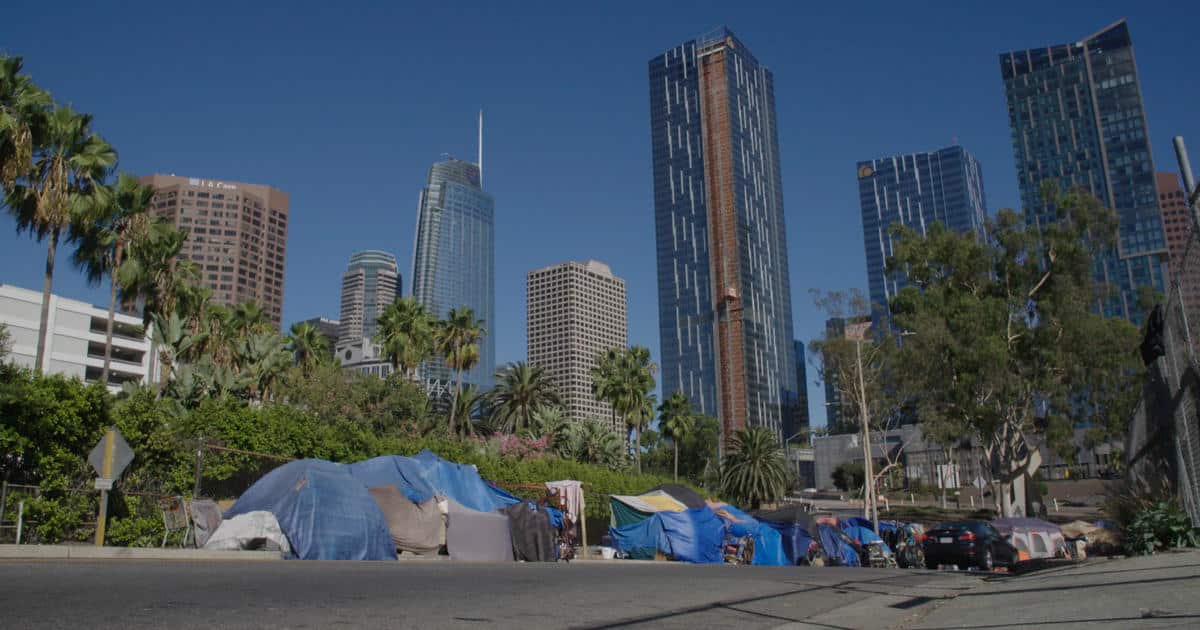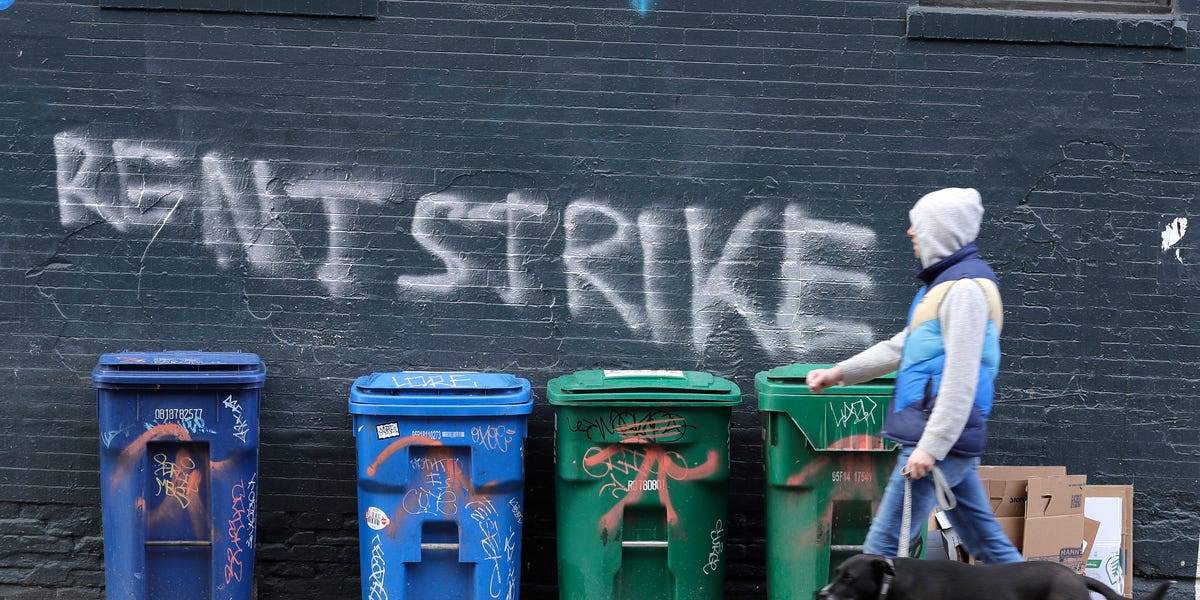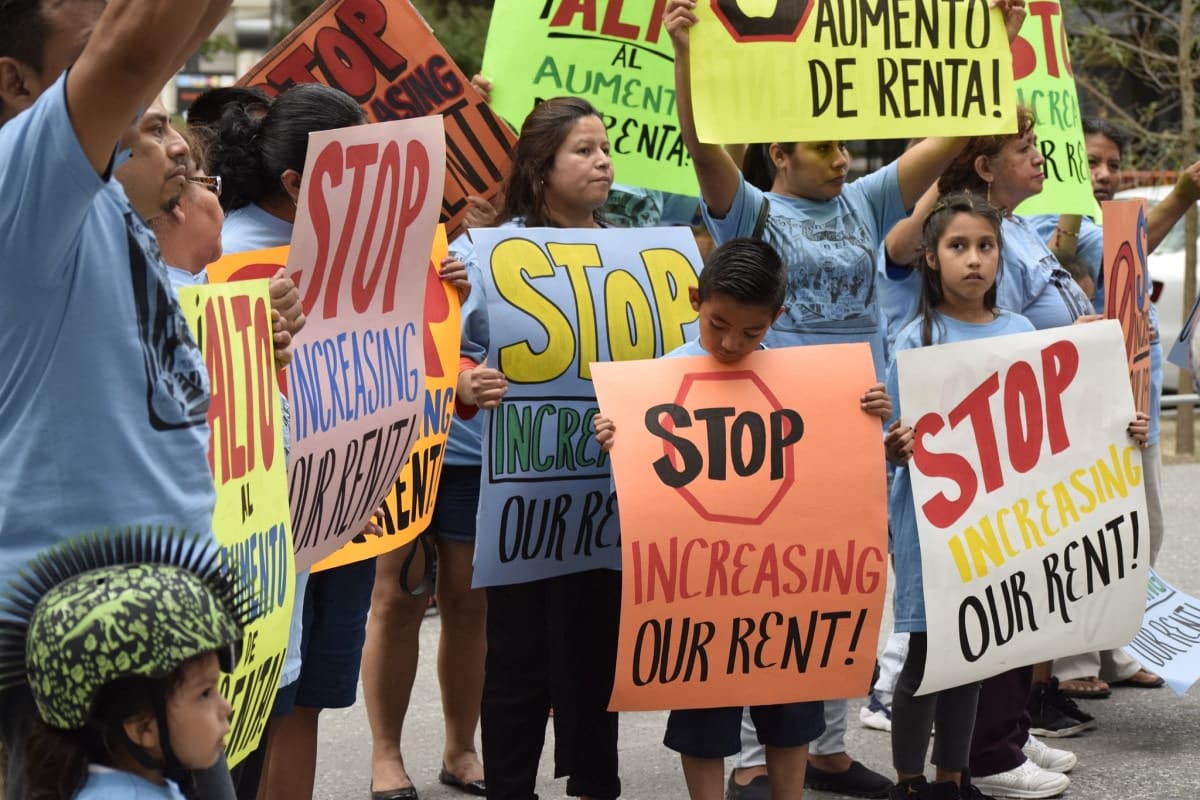
Housing Activists in Spain Occupy Vacant Bank-Owned Buildings and Halt Evictions
by
When I first arrived in Spain, a real estate agent told me to avoid Manresa, the working-class city outside of Barcelona where a friend of mine lived. “Don’t go there, it’s not very nice,” he said. “Go to Costa Brava [a vacation site up north] — instead.” Unperturbed, I took a train to Manresa the next day. After seeing hammer and sickle graffiti and anti-capitalist slogans as soon as I exited the station, I began to understand why a real estate agent may not feel comfortable in Manresa. I walked to the center of the city, through some windy, narrow streets and a charming plaza peppered with locals moseying around, to meet my friend at Ateneu La Sèquia, a towering building that was once a nunnery but has been turned into a social center thanks to a group of activists who reclaimed the space by squatting in it.
Instead of nuns praying, I encountered a small group of activists debating whether they would stage a demonstration later that day against a new Catalan national police station. To their left was a blurb mounted on a wall introducing the social center and the 24 collectives operating out of the space. While Ateneu La Sèquia is nonsectarian, it operates on agreed upon values of anti-capitalism, feminism, anti-racism, environmentalism, the right to self-determination and support for LGBTQ+ struggles. Each collective has its own meeting room in the gigantic, multistory building, and there is also an assembly hall, a posh-looking yoga studio, a playroom for kids, a sunny arts studio, an LGBTQ+ room, a spacious patio with murals of Angela Davis and many rooms under construction.
One of the collectives is the Platform for those Affected by Mortgages and Capitalism (PAHC), an organization focused on local housing-related struggles in Manresa as part of the national Platform for those Affected by Mortgages (PAH) network. The PAH formed in Barcelona in 2009, but gained new relevance and popularity after 15M, a plaza occupation movement that began on May 15, 2011, in response to the government’s austerity policies and bank bailouts. Thousands of people lost their jobs, were unable to pay their mortgages, faced eviction and even owed money to the banks because their apartments were worth very little.
“We started as a group of people who self-organized around the loans conflict, but it evolved into a full housing rights organization,” Zalo Lorza Planes, my friend and an organizer with PHAC, told me. “Now we have more cases of people occupying buildings rather than dealing with loans.”
PAHC holds weekly general assemblies on Sundays at La Sèquia where they introduce the organization and its goals to new attendees, make consensus-based decisions together and discuss strategies. They often hold another weekly assembly to discuss specific issues in more depth, such as conflict resolution and group dynamics, in addition to an annual recap assembly at the end of July, and another in September to plan the year ahead. And some members of PAHC will be joining the Second Congress of Housing Rights alongside delegates from other organizations across Catalonia next February, where they hope to establish a regional revolutionary manifesto and platform.
These assemblies lay the groundwork for strategic action to meet people’s material needs. For example, PAHC has helped Moroccan migrants and others occupy nine vacant bank-owned buildings in Manresa, according to Planes. The city government in Manresa typically does not provide migrants with housing, and sometimes even refers them to PAHC for assistance.
Pablo Ruiz, a longtime organizer, lives in one of the nine squats alongside Moroccan migrants. He says their building was built in 2007 and was empty for about 15 years before they occupied it in 2023. Living there allows him to refrain from working a salaried job and it also bridges the gap between politicized organizers and those who enter the movement primarily out of necessity. “Having someone speaking the native language living in the squats makes it easier to negotiate for migrants’ housing rights,” he said. “They are abused more often by police and the administration because of the language barrier.”
Nadia Saghuir, a migrant from Morocco who lives in Ruiz’s building, told Truthout that she didn’t agree with squatting an apartment at first. But after rental agencies refused to rent to her, she realized it was her family’s only option. She began attending PAHC meetings and evictions to understand the issue better. “After a while, I understood how the PAHC works and I can also say that I am a part of the PAHC,” she said. “I am living in a PAHC’s building, and fighting with the whole building’s community to demand a social rent to the property.” In addition to occupying vacant buildings, PAHC halts about three evictions per week, sometimes by physically blocking the entrance of homes when police attempt to evict tenants. This tactic buys them time to either relocate people, negotiate with the city government for public housing or negotiate with real estate companies to give occupiers lower “social” rent, which is theoretically required by Spanish law, but many companies — especially international ones — don’t comply.
One of the collectives has helped Moroccan migrants and others occupy nine vacant bank-owned buildings in Manresa.
As we toured the city, Planes invited migrants who were facing eviction to Sunday assemblies, which include translation support and child care. “We’re not an eviction defense service,” said Planes. “We believe in mutual aid, not charity. If you want to get help, you need to help others. But, of course, it’s hard to tell someone that you’re not going to help them, because at the end of the day we believe everyone should have a house, everyone.” Saghuir said engaging with and joining PAHC has been a transformative experience. “Today I can say that I am not the same Nadia from 2022, I am a new one with different ideas and knowledge,” she said. “Today I am very brave, I can do interviews or talk to neighbors in the neighborhood — of course a large part of them are against squatters — but I can talk to anyone and defend my apartment, defend the PAHC, defend the fight. And all of that thanks to the PAHC, that has given me a roof and has changed many ideas and many realities.”
PAHC is building power by encouraging people to be active agents of change in their own lives, and also by forming solidaristic relationships with other local organizations. The day before our interview, Planes participated in a successful eviction defense with about 70 others from the Network of Popular and Community Structures (XEPC), a network of anti-capitalist community structures in Manresa that mutually support each other. They warded off the police by going outside of the home prior to the eviction scheduled for 10 am. “We were expecting to get evicted. The cops came, but without riot police, probably because they saw it was in front of a school, in front of a market and there were too many of us,” Planes said. “The judiciary secretary came too. They cancelled the eviction, but they are going to come back on the 25th of February.”
Moments com aquest ens omplen d’orgull i sentit amb el que fem. Hem aturat el primer desnonament del curs. Un 6è intent i no han pogut!
S’han trobat amb una comunitat organitzada que té clars els seus valors.
Lluitem per la vida i contra el capital!
Orgull de camarades!👊👊💚💚 pic.twitter.com/0qkhoUSowB— PAHC Bages (@PAHCBages) September 17, 2024
Other times PAHC is able to negotiate lower rent or public housing with stakeholders prior to eviction attempts. PAHC has checks and balances in place to prevent being coopted by lawyers working for banks or the government.
“You don’t have meetings with politicians without telling the assembly. You don’t withhold information from the assembly. You don’t create separate groups to plan things without the assembly. There is a culture of not making decisions in a communication silo,” said Planes. “Whenever I negotiate with them, I go through the assembly, and sometimes they joke with me that I am getting too soft, because you build some empathy when you negotiate with someone and you get soft as you know them better. And that’s something we face often. The assembly or collective is there to tell you, ‘You’re getting softer.’”
PAHC sees these types of negotiations as part of the reality they face in the struggle for housing. “You can’t do anything if you’re constantly against everyone,” he said. “I disagree with everyone I meet very often. Today I met with hypercapitalistic lawyers from a hypercapitalistic company, but I might have resolved one of the 15 cases [with this bank] because we pointed out one of the big holes in the case.”
Housing movements in other parts of Spain have taken on similar shapes. From the ’80s through the 2000s, squatting was largely characterized by activists taking over social centers, like La Sèquia. But the tactic generalized into more of a popular, grassroots movement for housing following 15M. Throughout the country, occupations of plazas eventually dispersed into smaller-scale neighborhood assemblies, and neighborhood assemblies reached out to and supported people facing evictions. In Seville, 15M organizers set up a series of housing advisory offices managed by volunteer lawyers and activists that supported families facing eviction.
“Families began to group around the offices, to force negotiation with credit institutions, stop evictions and, after some time, to organize collective squats,” wrote researchers Iban Diaz-Parra and Jose Candon Mena. 15M’s assemblies helped 38 families move into four vacant buildings in Seville in May 2012, and in the coming months more than 200 families occupied another nine buildings.
Between 2011 and 2013, more than 700 people occupied empty houses owned by banks with PAH’s support in Catalonia and another 400 people used similar strategies in Andalusia, a territory in southern Spain, according to Waging Nonviolence.
“Successful housing movements need the backing of the neighborhood.”
A similar movement for housing didn’t materialize following Occupy Wall Street in the U.S., for complicated reasons, but perhaps in part because Occupy Wall Street’s momentum and energy didn’t disperse into neighborhoods. In a reflection on the U.S. Occupy movement, writer Peter Gelderloos, who participated in 15M’s plaza occupations and neighborhood assemblies, noted that an “absence of place” was a hurdle for U.S. social movements. “Hardly anyone is from anywhere, and most places are built according to the needs of planned obsolescence, so that local identities barely have any common foundation from one decade to the next,” he writes. “The landscape itself is constantly dissolving. In the US, people are born into precarity and forced mobility.”
Yet, housing struggles in the U.S. gained a resurgence in 2020 and 2021, when more than 10 million people faced eviction after losing their income due to COVID-19. The Autonomous Tenants Union Network established a formalized network in 2020 that coordinates tenant unions across the country, including the Portland Tenants United and the LA Tenants Union. In Philadelphia, about 50 people — mostly single moms and their children — took over 15 vacant properties owned by the Philadelphia Housing Authority in March 2020. By the end of September 2020, the city agreed to establish a land trust with 50 housing units in exchange for disbanding the encampments organizers had set up. As of February 2024, the city hadn’t handed over a single house to a land trust, however, according to local news source Billy Penn.
Housing movements in the U.S. face unique challenges because private property is revered above all else legally and morally for much of the population. In part, this is a legacy of slavery and colonialism: Stolen Indigenous land and enslaved people were the two great forms of property in the New World.

Members of PAHC hold an assembly inside Ateneu La Sèquia in Manresa, Catalonia, in winter 2024. PAHC
In turn, people on Turtle Island — a term used by some Indigenous people to refer to North America — have resisted the private property regime since its inception. Tens of thousands of enslaved Black people abolished themselves as property by running away prior to the Civil War and hundreds of thousands more fled during the war in what W.E.B Du Bois called the “General Strike” of slaves. In most major cities during the 1930s, the Communist Party organized large-scale eviction defenses and protests through Unemployed Councils where hundreds, and sometimes thousands, of people would prevent police from taking furniture from people’s homes. In some cases, police shot and killed eviction defenders. In March 1931, one reporter wrote that eviction defense had “practically stopped evictions” in Detroit. Still, millions were forced out of the rent-paying housing market during the Great Depression.
What would it take for housing struggles to generalize into large-scale grassroots movements in the United States today? Hannah Dobbz, author of Nine-Tenths of the Law: Property and Resistance in the United States, told Justseeds she has seen public squatting demonstrations successfully executed in the U.S. when squatters involve the surrounding community.
Planes also emphasized the importance of garnering public support through political education. “Successful housing movements need the backing of the neighborhood,” he said. “Make sure there’s political consciousness.” Learning about housing laws and holding boisterous demonstrations out of occupations have also bolstered the housing movement in Manresa. “When we occupy a building, it’s a celebration,” he said. “When we go public, there’s free food in front of the house and we throw a party. We say, ‘That’s ours, we achieved that, you are welcome to come.’”
U.S. organizers can take inspiration from Manresa and other parts of the world but ultimately need to determine which actions and strategies make sense in their own neighborhoods. Dobbz said U.S. squatters should not attempt to replicate the European movement, which has its own specific rich history of squatting and property resistance. U.S. squatters need to study and understand the importance of their own context. “Many of the confrontational/militant Euro-style tactics don’t seem to translate in the American context — instead they often seem to just confuse and annoy neighbors, media and authorities … and then all the squatters go to jail,” she said.
It may not be possible to throw rowdy parties outside of gigantic squattable nunneries in Bushwick, or Los Angeles or San Francisco just yet, but we may be able to find our own strategic equivalents by building roots and relationships in own neighborhoods.






